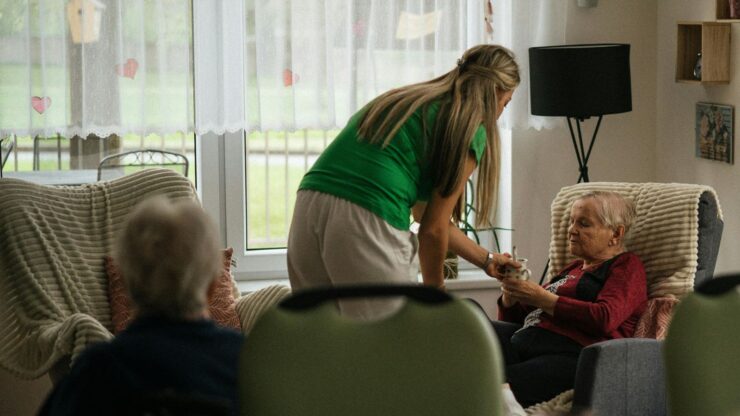
What to Watch for When Coming Home From the Hospital
Key Takeaways
- Watch for signs of infection like fever, swelling, or unusual pain.
- Be alert to mental changes such as confusion or agitation.
- Prevent medication errors by tracking doses and schedules carefully.
- Support healing with daily vitals, light activity, good nutrition, and clear records.
The first 5-7 weeks after hospitalization are critical for recovery. During this time, it’s important to monitor symptoms and watch for physical and mental changes to prevent readmission. Whether returning home from an injury, infection, or surgery, it is best practice to closely track any deviations from your loved one’s baseline and keep the doctor and their team informed.
Watch for signs of infection
Infections are a major concern after a hospital stay, as they can develop quickly after surgery or treatment, especially if wound or IV sites are not properly cared for. It’s important to look out for:
- Fever, chills, or sweats
- A sore throat or a new cough
- Redness, pain, swelling, or drainage (pus) at any wound or IV site
- Pain or burning during urination, or increased urination
- Sudden swelling in limbs
- Pain that doesn’t improve with medication
- New or worsening shortness of breath, especially when resting
Watch for mental changes
Hospital stays can impact mental health and cognitive function just as much as they can affect physical health. A common condition, particularly in older adults, is delirium, which is a sudden and temporary state of confusion and disorientation. If your loved one appears unusually forgetful, agitated, or disconnected from reality, reach out to their care team right away.
Medication safety
Medications play a significant role in recovery but come with inherent risks. Without clear instructions for medication management, it’s easy to miss doses or take the wrong amount. Research shows that nearly 50% of patients experience a medication error after leaving the hospital.
To reduce risks:
- Review the medications that should be started, continued, or discontinued.
- Follow up with the pharmacy to track readiness so medications can be picked up or delivered promptly.
- Keep an updated list of all medications, including their doses and administration times.
Daily habits to support healing
In addition to monitoring symptoms, caregivers can help support recovery after hospitalization through daily practices:
- Track vital signs once a day (temperature, blood pressure, pulse). Bring any unusual changes to follow-up appointments.
- If cleared by a doctor, light walks and range-of-motion exercises can increase blood flow, strengthen muscles, and decrease the risk of muscle atrophy.
- Prioritize nutrition by aiming for small, frequent meals that are rich in protein, fiber, and other nutrients to promote healing and digestion.
- Hospital stays can lead to weakness or balance issues. Watch for unsteady walking, shuffling, or hesitation when standing up.
Keep detailed records
Maintaining clear records will help doctors provide the best care if concerns arise. Be sure to document:
- Any new or worsening symptoms and when they began
- Changes in appetite, fluid intake, or behavior
- Information about medications, including what is being are taken and when
- Contact information for doctors, specialists, and the pharmacy
At LifeWorx, we understand that bringing someone home from the hospital is a relief, but it also comes with a lot of responsibility. Our professional caregivers are available to provide compassionate in-home care support and can make the transition back home safe.
If you’re unsure about the type of care needed after hospitalization, a Registered Nurse can visit the home to conduct an assessment. The nurse will work with your LifeWorx client manager to find the best caregiver for your needs. This assessment will serve as a tool to determine the frequency of care required and personalize tasks for the caregiver during their shift.


















